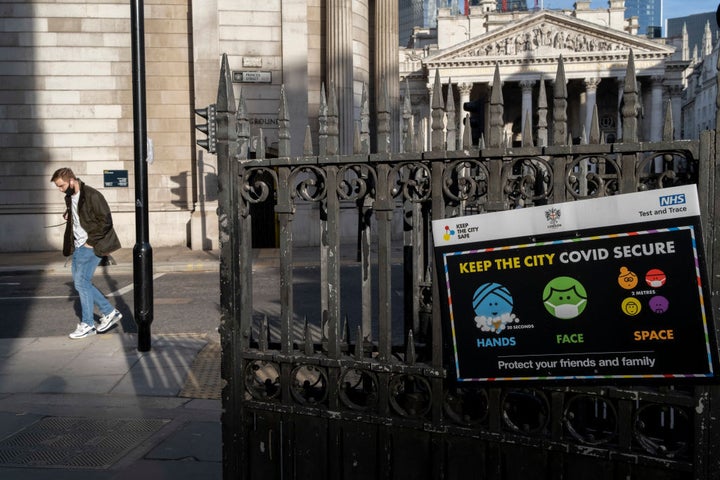Prime Minister Boris Johnson’s roadmap for easing lockdown restrictions will operate over the course of four stages. At each one, the success of the vaccine rollout, vaccine efficacy, the presence of variants and infection rates will be measured before deciding whether to take the next step.
The prime minister announced there will be a minimum five-week gap between each step – and easing of restrictions will happen on a nationwide, rather than a regional, basis.
Here are some of the bits you might have missed.
1. Large events trial
The roadmap could see sports venues welcome a limited number of spectators back on May 17 as part of step 3.
Meanwhile the government has been working with industry representatives to explore when and how events with larger crowd sizes, less social distancing or in settings where transmission is more likely – such as indoors – will be able to return safely.
Trials will take place for music festivals, sports events and large weddings and conferences as part of the government’s Event Research Programme in April. They will use “enhanced testing approaches and other measures to run events with larger crowd sizes and reduced social distancing to evaluate the outcomes”.
The pilots will also examine how such events can take place without any social distancing, using other mitigations such as lateral flow testing, the government said.

Findings from pilots across the sport and cultural sectors will be brought together to develop a “consistent approach” to removing capacity limits as part of step 4 – which would start no earlier than June 21.
As is stands, as part of step 3, indoor events will be capped at 50% capacity or 1,000, whichever is lower, and for outdoor events this will be 50% capacity or 4,000, whichever is lower, with special provision for large, outdoor, seated venues where crowds can be safely distributed, allowing up to 10,000 people or 25% of total seated capacity, whichever is lower.
2. More support for self-isolating
The government has promised more support for those self-isolating in an acknowledgement that it is critical for halting the spread of the disease “but never easy for those affected”.
The Test and Trace Support Payment Scheme will continue into the summer, and will be expanded to cover parents who are unable to work because they are caring for a child who is self-isolating, and the funding made available for local authorities as part of this to make discretionary support payments will be increased to £20 million per month.
There will also be more funding to help local authorities ensure people self-isolating have access to practical support, such as food deliveries or help with their caring responsibilities, and support for wellbeing.
The Medicines Delivery Service that has been established to help clinically extremely vulnerable people will be extended to provide essential deliveries for self-isolators without access to alternatives.
3. An end to self-isolating (for close contacts)
The dreaded app alert telling you to self-isolate for 10 days could become a thing of the past, the roadmap states.
A section titled “Building a Test, Trace and Isolate system for the future” reads: “In time, it is possible that testing becomes a viable alternative to self-isolation for contacts of infected people.
“The emergence of new variants has meant this is not yet feasible, but the testing programme is being primed to deliver this when the time is right.
“The evaluation, which has thus far involved around 12,000 people across 21 organisations and 180 sites, will be expanded in the coming months and include a large-scale programme with schools.”
4. Red list countries
There are currently 33 countries on the government’s so-called red list. If evidence emerges that suggests more countries should be added to the list, the government has promised to act swiftly.
The list is currently made up of large parts of South America and southern Africa, and also includes Portugal and the United Arab Emirates.
Anyone arriving in the UK who has been in a red list country in the previous 10 days must quarantine in a government-sanctioned hotel for 10 days.
The roadmap also states that should evidence arise that vaccines deployed in the UK are sufficiently effective against Variants of Concern (or the situation in those countries changes) countries may be removed from the list.
5. Disproportionate impacts
Though details are currently scarce, the government has vowed to address the unequal impacts of Covid-19 – including increasing community testing in disproportionately affected groups and providing local authorities with key vaccine data to help counter misinformation.
Other vulnerable sectors of society it has promised extra support for include the employees of small businesses, prisoners, asylum seekers, those suffering domestic abuse, rough sleepers and disadvantaged students recovering from lost learning.
Those facing disproportionate impacts on their mental health and wellbeing will benefit from a further action plan in addition to the Wellbeing and Mental Health Support Plan published last year.
Increased workforce testing in higher risk occupations will be rolled out and the £170 million Covid Winter Grant Scheme announced on November 8 is now being delivered by local authorities to support vulnerable families until the end of the Easter holidays.
Families with disabled children will be supported and the Better Health campaign launched last year to encourage people to embrace a healthier lifestyle and to lose weight if needed will continue to address comorbidities that pose additional risks for individuals who contract the disease.

